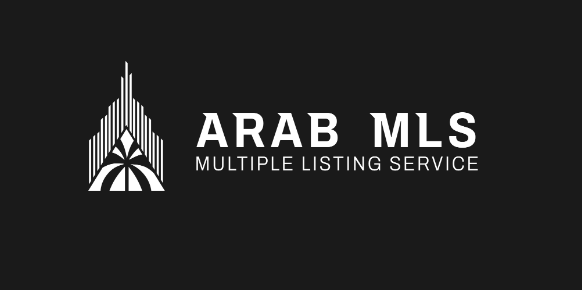The real estate market is deeply intertwined with local amenities and services, and one of the most significant factors influencing a property’s desirability and value is the quality of nearby schools. For many buyers, especially those with children or planning to start a family, access to good schools is a top priority when selecting a home. As a result, integrating local school data into Multiple Listing Service (MLS) listings has become an essential strategy for real estate professionals looking to enhance their listings and provide potential buyers with the most relevant and helpful information.
MLS platforms serve as centralized databases for property listings, offering details about homes, commercial properties, and rental units. While the primary focus of MLS platforms is to provide information about the property itself, incorporating local school data into these listings can significantly improve the buyer’s decision-making process. By providing easy access to details about nearby schools, school ratings, and educational facilities, real estate agents can create a more comprehensive and valuable resource for prospective buyers.
In this article, we will explore the benefits of integrating local school data with MLS listings, the process of incorporating school information, the challenges involved, and best practices for ensuring that integration is seamless and valuable for all parties.
Why Integrate School Data with MLS Listings?
Buyer Preference for School Information
Research has shown that school quality is one of the top factors influencing homebuyers’ decisions. Families with children or those planning to have children prioritize proximity to good schools when choosing a neighborhood. By integrating school data directly into MLS listings, real estate agents can cater to these needs and attract a larger pool of interested buyers. Providing school information upfront can save time for both agents and buyers, as it eliminates the need for buyers to conduct additional research.
Improved Property Value Perception
The presence of well-rated and well-regarded schools can significantly boost the perceived value of a property. Buyers often view neighborhoods with access to top schools as more desirable, which can, in turn, lead to higher property prices. By providing comprehensive school data within MLS listings, agents can highlight this value proposition, increasing interest and potential offers.
Enhanced Transparency
Transparency is crucial in the real estate market. Buyers appreciate when agents provide detailed and up-to-date information, especially when it comes to something as important as local schools. By integrating school data into MLS listings, agents demonstrate a commitment to providing comprehensive information that supports buyers in making informed decisions.
Competitive Advantage
In a competitive real estate market, differentiation is key. Offering MLS listings that include detailed school information can help real estate agents stand out from competitors. Buyers may gravitate toward listings that not only showcase the property but also address other essential factors like the quality of nearby schools, making these listings more appealing.
Improved Searchability

When local school data is incorporated into MLS listings, it improves the search functionality for potential buyers. For example, buyers can filter their searches based on specific school districts or ratings, making it easier for them to find homes that align with their preferences. MLS platforms with integrated school data enhance the user experience by offering more tailored and precise search results.
Types of School Data to Integrate with MLS Listings
School Ratings and Reviews
One of the most valuable pieces of information buyers seek is school ratings, which provide insight into the quality of education at a particular school. These ratings are typically based on standardized test scores, student-teacher ratios, extracurricular opportunities, and parent reviews. Integrating this data into MLS listings allows potential buyers to quickly gauge the quality of schools in the area.
School Proximity
For many buyers, the distance to nearby schools is a key consideration. By including the proximity of schools to properties listed on MLS platforms, agents can help buyers make informed decisions about the convenience of school drop-offs, commute times, and overall access to educational facilities. This is especially important for families with young children who prefer to live within walking distance of schools.
School District Information
Providing school district boundaries and details is essential for buyers who prioritize location. Buyers often want to know which district a property falls under, as school district reputation can be a major factor in their decision. Listing this data directly on the MLS can simplify the home search process for buyers.
Special Programs and Offerings
Many buyers are particularly interested in specialized programs or extracurricular offerings that local schools provide, such as STEM programs, arts, or language immersion programs. Including this information in MLS listings can help buyers identify properties in areas with schools that offer programs they value.
School Performance Trends
Integrating historical data on school performance, including trends in test scores and graduation rates, can provide potential buyers with a better understanding of a school’s performance over time. This type of data can influence a buyer’s decision, especially if the performance has shown significant improvement or consistent excellence.
School Demographics
Information about the diversity of a school population, including student ethnicity, socioeconomic status, and inclusion policies, is becoming increasingly important for many homebuyers. For some buyers, the cultural environment of a school is a key consideration when deciding where to live.
How to Integrate School Data with MLS Listings
Utilizing APIs and Data Partnerships
One of the most efficient ways to integrate school data with MLS listings is through the use of APIs (Application Programming Interfaces). APIs allow MLS platforms to pull school data from external sources such as GreatSchools, Niche, or government databases, ensuring that the information remains up-to-date and accurate. By establishing partnerships with organizations that provide school performance and proximity data, MLS platforms can seamlessly integrate this information into their listings.
Custom Data Feeds
For MLS platforms with more technical resources, custom data feeds can be developed to pull school data directly into the listings. This can include school ratings, proximity data, district boundaries, and other relevant information. Custom feeds can be designed to meet the specific needs of the MLS platform, allowing for tailored data integration.
Embedding Interactive Maps
Interactive maps that highlight the location of schools about listed properties can provide buyers with a more visual representation of their options. By integrating map tools like Google Maps or other GIS-based services, MLS platforms can display school locations and other educational facilities directly on property listings. This feature enhances the user experience and allows potential buyers to explore the neighborhood’s educational landscape visually.
Automatic Updates
Ensuring that the school data on MLS listings is always up-to-date is crucial. Data integration should be automated so that whenever school ratings or district boundaries change, the MLS platform reflects those updates in real-time. This can be accomplished through continuous synchronization with school data providers or regular data refreshes to ensure accuracy.
User-Generated Feedback
In addition to official school ratings and data, allowing users to provide feedback on local schools can enrich the MLS listings. User-generated reviews, especially from current or past residents of an area, can provide valuable insight into a school’s quality and the neighborhood’s overall educational environment.
Challenges in Integrating School Data with MLS Listings
Data Accuracy and Reliability
Ensuring the accuracy and reliability of school data is one of the most significant challenges in integration. School ratings and data can change over time, and it is crucial to ensure that MLS listings reflect the latest information. Failure to keep school data updated can lead to buyer frustration and potentially damage the credibility of the MLS platform.
Privacy Concerns
In some regions, there may be concerns regarding the collection and distribution of data related to school demographics, performance, or other sensitive information. MLS platforms must ensure that any data shared complies with privacy regulations, such as FERPA (Family Educational Rights and Privacy Act) in the United States, and that the information is used responsibly.
Data Standardization
School data can be presented in many different formats across various sources. Standardizing this data for MLS integration is crucial for providing consistency and ease of use. School ratings, proximity data, and other metrics must be aligned in a way that is understandable to buyers, avoiding confusion or inconsistencies.
Integration Costs
The costs associated with integrating school data into MLS listings can be significant. For MLS providers, this may involve paying for API access, establishing partnerships with data providers, or developing custom software solutions. However, the long-term benefits, such as increased buyer satisfaction and property value perceptions, often outweigh these costs.
Best Practices for Integrating School Data
Collaborate with Trusted Data Providers
MLS platforms should work with reputable school data providers to ensure that the information shared is accurate and up-to-date. By partnering with organizations like GreatSchools or Niche, MLS providers can offer reliable, verified school data that potential buyers can trust.
Regularly Update School Data
To maintain the integrity of MLS listings, it is essential to regularly update school data to reflect changes in ratings, proximity, or district boundaries. Automated data updates, whenever possible, help ensure that listings are always accurate.
Provide a User-Friendly Experience
The goal of integrating school data into MLS listings is to enhance the buyer’s experience. MLS platforms should prioritize user-friendly design, including easy navigation, interactive maps, and clear labeling of school-related information. This will help buyers quickly find the information they need without being overwhelmed by excessive details.
Ensure Compliance with Privacy Regulations
Any school data shared through MLS platforms must comply with privacy regulations to protect the confidentiality of students and their families. MLS providers must ensure that they are not violating any laws or ethical standards when sharing school information.
Conclusion
Integrating local school data into MLS listings is a powerful tool that real estate professionals can use to add value to their property listings and enhance the buyer experience. School data, such as ratings, proximity, district information, and specialized programs, is crucial for many homebuyers, particularly families. By providing this information directly within MLS listings, real estate professionals can offer a comprehensive resource that helps buyers make more informed decisions.
While challenges such as data accuracy, privacy concerns, and integration costs exist, the benefits of including school data far outweigh the obstacles. By following best practices and collaborating with trusted data providers, MLS platforms can create a seamless, valuable experience for both buyers and sellers, ultimately improving the real estate transaction process.













